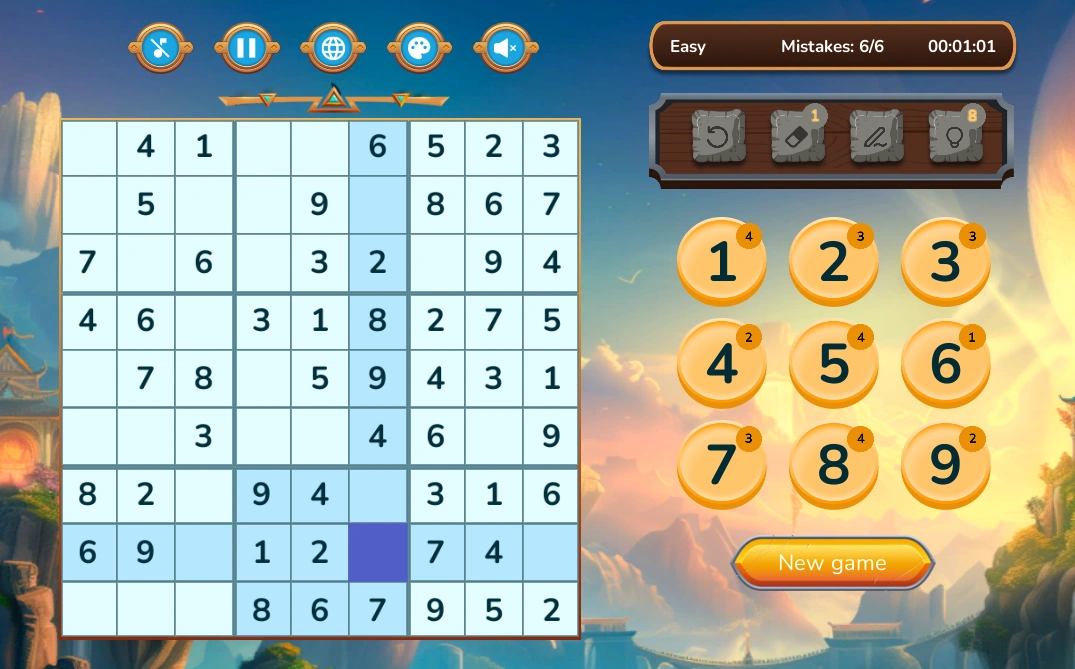Hidden Pairs Strategy: The Key to Sudoku Mastery
For Sudoku enthusiasts striving to advance their skills, unlocking the power of Hidden Pairs is a pivotal moment. Few feelings match the rush of revealing a hidden pair.
Scanning the number grid, players spot a pair of digits confined to the same two cells within a box, row, or column. Like detectives piecing together a breakthrough clue, players can eliminate those digits from other cells, breaking the logjam and opening up new solving opportunities.
The Evolution of the Hidden Pairs Technique

The origins of hidden pairs trace back to the global Sudoku boom in the 2000s. As the community sought to resolve complex Sudoku grids, guidebooks and forums emphasized the importance of adopting the effective Hidden Pairs technique.
These mutually exclusive pairs allow solvers to eliminate those numbers from other cells in the same section, simplifying the grid and triggering a cascade of logical deductions.
Though straightforward in concept, spotting hidden pairs requires careful observation. With practice, solvers can train themselves to recognize these patterns instinctively. The rewards are significant — difficult puzzles become manageable, and players gain a reliable tool for solving with confidence. Mastering hidden pairs is a critical step toward Sudoku expertise.
Fundamental Principles of the Hidden Pairs Strategy
The hidden pairs technique is an effective strategy for progressing in difficult Sudoku puzzles.
1. Identifying Hidden Pairs in a Sudoku Grid
Hidden pairs occur when two matching candidate numbers exist only in a pair of cells in the same row, column, or 3x3 box. For example, if you scan a row and see that the numbers 2 and 9 appear only in cells A1 and A5, you've spotted a hidden pair for those candidates. The key is that no other cells in the row/column/box contain these 2 or 9 candidates.
This pairing indicates that cells A1 and A5 must exclusively contain 2 and 9. No other candidates can exist in those cells, and all other candidates can be eliminated from them. Identifying these exclusive pairs is the first critical step in leveraging the hidden pairs technique.
2. Narrowing Down Options with Logical Elimination
After uncovering a hidden pair, the next step is eliminating all other candidates from those cells. If cells A1 and A5 can only be 2 or 9, then you should remove any other numbers you've penciled in for those cells. This logical deduction locks cells A1 and A5 into the pair and opens up solving opportunities elsewhere.
Fewer options in those cells mean fewer options in connected cells in the same row, column, and box. This creates a cascading effect, simplifying the puzzle.
3. Applying Hidden Pairs to Advance the Puzzle
Eliminating candidates from a hidden pair frequently exposes new solving opportunities. If this leaves another cell with only one possible number, you can confidently fill in that cell. It creates a chain reaction of deductions in connected cells, allowing you to keep solving the puzzle through the power of the hidden pairs technique.
Tips and Tricks for Mastering Hidden Pairs Sudoku

Here are some tips for mastering the hidden pairs technique:
- Look for boxes with only two available spots for a given number. These indicate a hidden pair. Circle or mark them as a pair.
- Scan rows and columns after identifying a hidden pair. Cross off that number from other cells in the same row or column as the pair. This will expose more information.
- Don't forget to check for naked pairs, too. A naked pair is when two cells in a unit (box, row, or column) contain the same two numbers. Those two cells must be the locations for those two numbers.
- When you find a hidden or naked pair, look for other pairs. Chains of pairs can uncover even more possibilities.
- Double-check your work. It's easy to overlook a detail or make an invalid assumption. Taking an extra minute can prevent mistakes.
- Start practicing on easy puzzles and work your way up. Be patient with yourself as even experienced solvers need time to master new strategies.
Mastering hidden pairs provides a great foundation for developing your overall sudoku skills.
Start Solving Like a Pro!
With practice, you can use hidden pairs to progress and complete even the toughest Sudoku puzzles. Train your eye to spot the mutually exclusive pairs that signal where to eliminate possibilities. Then use these as footholds to identify the solution path.



